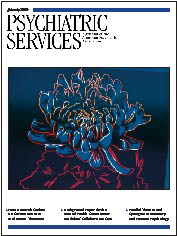Abstract
OBJECTIVES: Few psychotropic medications are approved for use among children younger than 18 years. Yet previous studies have shown an increase in the use of psychotropic medications among school-age children and adolescents. Most previous studies examined data only up to 1997; therefore, the results predate any impact of changing federal policies and newly marketed medications. This study examined trends in the prescription of psychotropic medications to adolescents aged 14 to 18 years in office-based care in the United States from 1994 to 2001. METHODS: Data from the National Ambulatory Medical Care Survey (NAMCS) were used to determine visit rates and prescribing patterns from 1994 to 2001 for psychotropics that were prescribed in office-based treatment settings to adolescents aged 14 to 18 years. Rates of visits that resulted in a prescription for psychotropic medication were calculated for two-year periods. Analyses were conducted by type of medication, gender, and the prescribing physician's specialty. RESULTS: Rates of visits that resulted in a psychotropic prescription increased from 3.4 percent in 1994-1995 to 8.3 percent in 2000-2001. These trends were evident for males and females. The average annual growth rates for psychotropic prescriptions were much higher after 1999. Trends were also significant across drug classes. By 2001, one out of ten office visits by adolescent males resulted in a prescription for a psychotropic medication. CONCLUSIONS: Average annual growth rates for the prescription of psychotropics to adolescents increased from 1994 to 2001, with especially rapid acceleration after 1999. This increase may be associated with changing thresholds of diagnosis and treatment, availability of new medications, and changes in federal regulatory policies concerning promotion of medications by the pharmaceutical industry.



